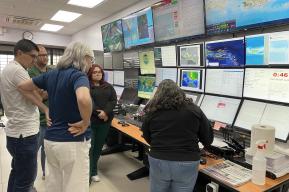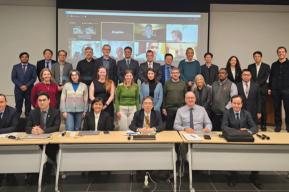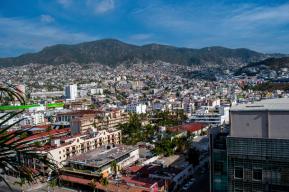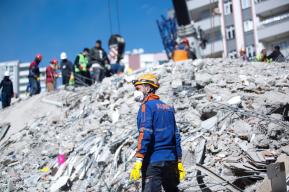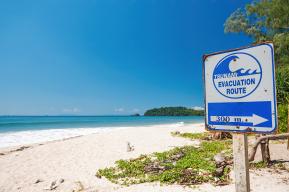
Disaster Risk Reduction
Climate change, urban pressure and lack of disaster preparedness, are increasingly transforming natural hazards, such as earthquakes, volcanic eruptions or tsunamis into disastrous events causing life and economic losses. The risk of disasters caused by natural hazards is rising.
Disaster Risk Reduction (DRR) is increasing in the agenda of the Organisations of the UN System. While the Sendai Framework for Disaster Risk Reduction 2015-2030 is the roadmap for Disaster Risk Reduction, other global agendas including the Sustainable Development Goals, the Paris Climate Agreement, the New Urban Agenda and the Biodiversity Agenda have targets that cannot be attained without considering Disaster Risk Reduction. There are clear links between those international instruments.
UNESCO is acting across the board, in advocating for risk awareness, prevention, and preparedness and build back better, in fostering learning and in building capacity. Operating at the interface between the natural and social sciences, education, culture and communication, UNESCO seeks to strengthen the resilience of societies - through capacity building, knowledge sharing and networking, early warning and policy advice, working with governments, civil society, research institutions, other UN agencies and international organizations, and all key actors. Working alone or in collaboration with both UN Agencies and other scientific entities, UNESCO has been a catalyst for international, inter-disciplinary cooperation in many aspects of disaster risk reduction and mitigation.
UNESCO's contribution to Disaster Risk Reduction
UNESCO supports the Member States on:
- Science, technology and innovation for resilience
- Early Warning Systems
- The built environment
- Education and school safety
- Disaster Risk Reduction for culture & sites
- Environment & ecosystem based Disaster Risk Reduction
- Post disaster response
- Risk governance and social resilience

The work of the Organization is being developed and implemented through its different Sectors, Field Offices, Designated and Affiliated Sites, Category I and II Centers, UNESCO Chairs and Networks. The leadership of the organization is recognized and partners look up to UNESCO to lead the mainstreaming of DRR in its mandated sectors and to promote trans- and multi-disciplinarity in research.



